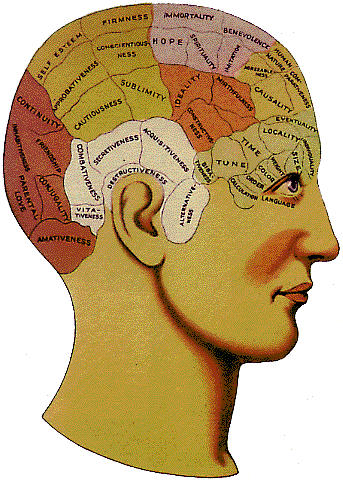

Gall and his followers identified 37 mental and moral faculties which they thought were represented in the exterior surface of the skull. Gall's initial list comprised 27 faculties, to which his main collaborator, Spurzheim, added ten more. These faculties were divided into several spheres: intellectual, perceptiveness, mental energy, moral faculties, love, etc. Most of the faculties dealt with abstract and hard-to-define personality traits, such as firmness, approbativeness, cautiousness, marvelousness, eventuality, spirituality, veneration, amativeness. etc. Other phrenological traits have modern scientific counterparts which can be evaluated with proper psychological tests, such as constructiveness, destructiveness, individuality, self-esteem, idealism, affection, etc.
The main result of Gall's theory was a kind of chart of the skull, which mapped the regions where the bumps and depressions related to the 37 faculties could be palpated, measured and diagnosed. This was a marvelous device for practicioners, and was widely used.
In order to explore the structure of a Gall/Spurzheim map, click on the marked areas on the surface of the head below:

From: "Phrenology,
the History of Brain Localization"
By: Renato M.E. Sabbatini, PhD
In: Brain & Mind,
March 1997.